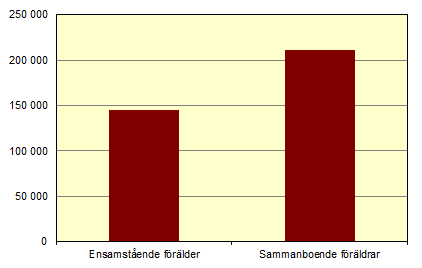52 000 children experienced a separation in 2013
Statistical news from Statistics Sweden 2014-10-06 9.30
nextDuring 2013 some 52 000 children in Sweden experienced a separation. Gävleborg, Södermanland and Dalarna were the counties where separations were most common. Children who live with a single parent after a separation often have worse economic conditions than children who have parents living together.
During 2013 nearly 52 000 children in Sweden had experienced a separation of their parents. This corresponds to 3.4 percent of those children who lived together with both parents.
It is more common for children with foreign background to experience a separation than for children with Swedish background. Differences also exist between different parts of Sweden; the counties of Jönköping, Kronoberg and Halland had the lowest percentage of children who had experienced a separation. The highest percentages were in the counties of Gävleborg, Södermanland and Dalarna.
Worse finances for children with single parents
Children who live with a single parent often have worse economic conditions compared with children who have parents living together. Disposable income is lower, and a larger part of income comes from different forms of family support such as child allowance, housing allowance, maintenance support and economic support.
Family's disposable income per consumption unit in families with children living at home aged 0–17. SEK, 2012

The average disposable income for a family with one adult and one child is about SEK 18 400 per month. Disposable income for a family with two adults and two children is SEK 43 000 per month.
Children with single parents live in smaller households. Besides living with only one parent, these children also have fewer siblings who live at home. 33 percent of children living with a single parent are the only children living in the family, compared to 16 percent of children with parents living together.
Definitions and explanations
Disposable income is the sum of all taxable and tax free income including subsidies minus taxes. To compare disposable income between different types of households, a weight system is used where consumption is related to the composition of the household and where each person is given a weight that is based on calculated consumption. The weights of the household members (consumption units) are added together and the disposable income is divided by this sum. This results in the disposable income per consumption unit.
New statistics on children
The 2013 statistics for Children and their families have now been published in the Statistical Database. Among other things, the information deals with families, siblings, separations, custody and geographic distance between children and parents.
Statistical Database
More information is available in the Statistical Database
Feel free to use the facts from this statistical news but remember to state Source: Statistics Sweden.
